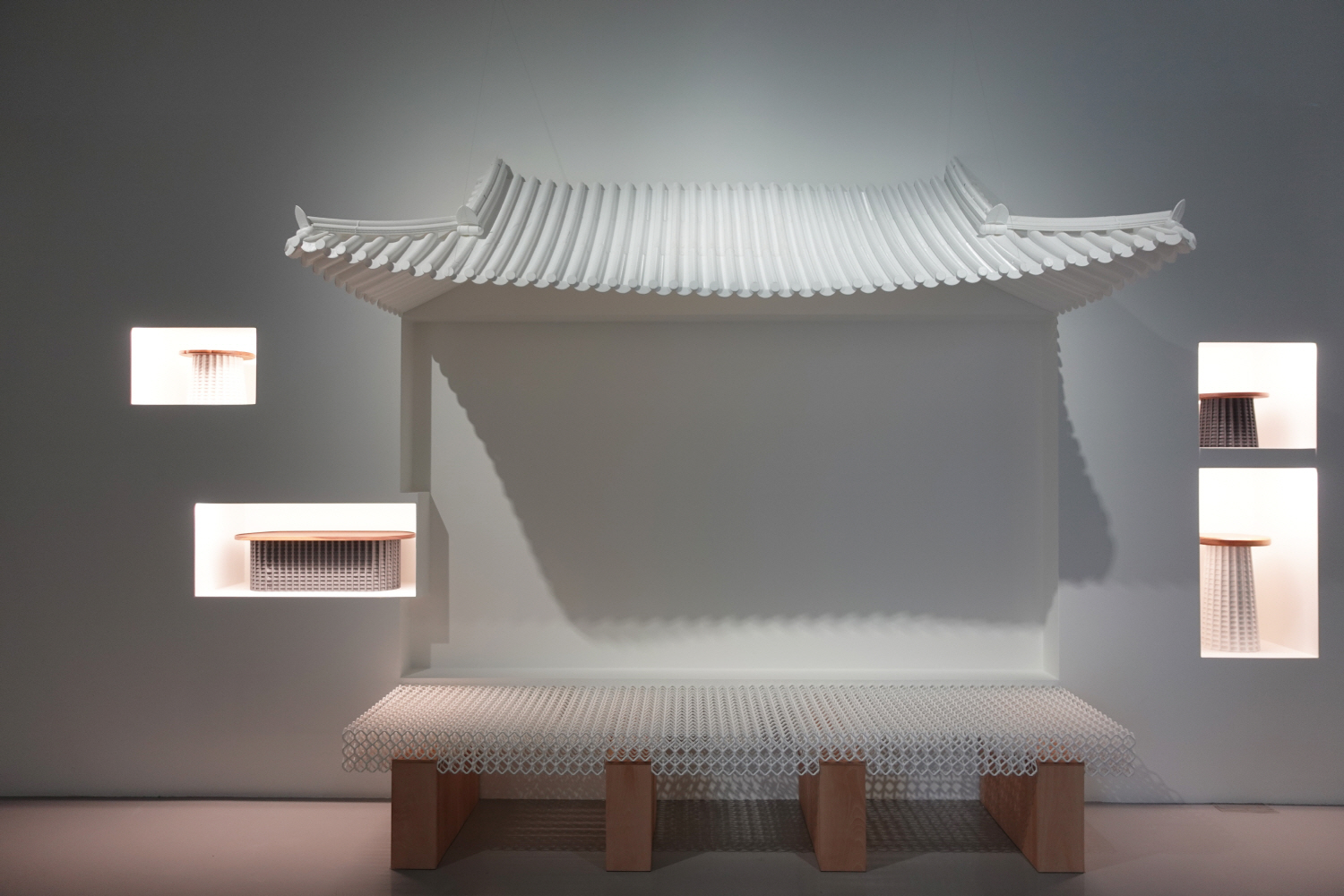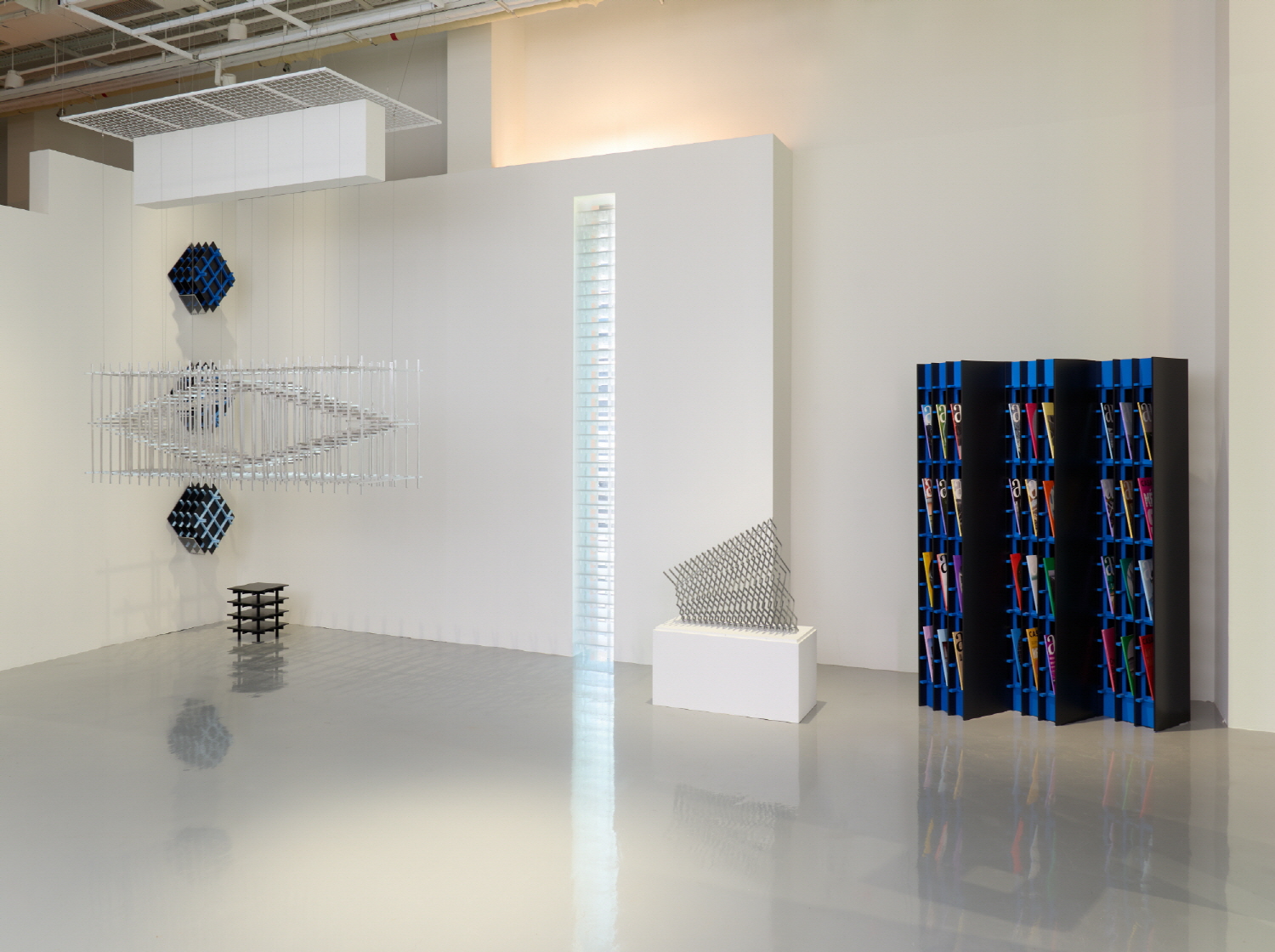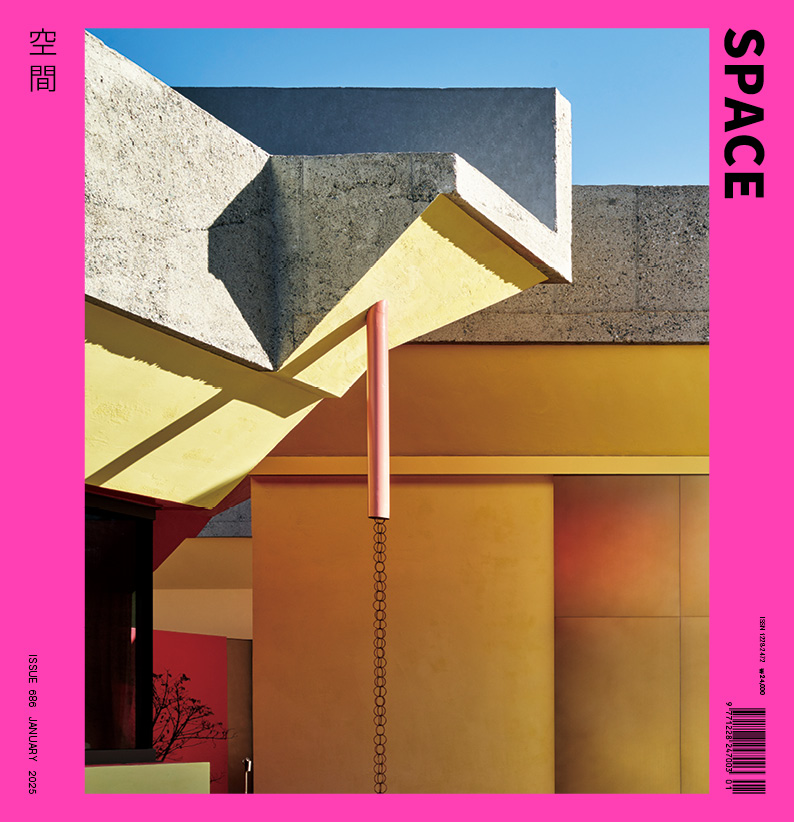SPACE January 2025 (No. 686)

Installation view of a house built with craft ©Jin Yoonsoo

Installation view of Op series and Solid Mirage series (2024) / Image courtesy of Seoul Museum of Craft Art
‘Crafting the House’, presented by Seoul Museum of Craft Art, is a reinterpretation of various architectural elements, including door, floor, column, beam, widow and roof in the lens of craft art.
The exhibition commences with ‘video sculpture’ by Guem Minjeong. By passing through her work, The Imaginary Way (2024), visitors are permitted to dive into a space where present and past, real and imagination are co-existing.
Kim Gunsoo placed dolmen-inspired art pieces on the floor, where the immersive tour starts. He stacked a duplicate copy of the stone upon the original one. Lee Younghak, who said ‘the true colour of a stone is unveiled when it holds moisture’ took a traditional mortar, hwak (確) as a design motif to create a garden space called Stone+Water. His work can be explained as a series of cornerstone works in different shapes, such as a Korean letter ‘ㄱ’ (giyeok), a window, and a labyrinth.
In the Column section, Shon Shinkyu introduces his work, Split. The artwork is an amalgam of a wood column and mass- produced stainless steel. This blend led to creating a strong contrast between two different materialities. While Shon Shinkyu emphasised the identity of material itself, Studio SHINYOO focused on the fact that column is separated from the wall and treated it as a monumental object.
Kang Sukyoung used the museum wall itself as his palette. By posting two thousand pieces of white ceramic on the surface, he tried to concentrate solely on the diverse textures of them. Meanwhile, Yu Sangduk presented a wall of multifarous colour, an outcome of combining machine accuracy with the variability of glaze.
Some artists breathe new life into these traditional walls with their special intentions. Lyu Namgwon accumulated layers of ottchil- treated paper on top of a sculpture to create a new wall. As a result, the wall crafted from the artisan’s eyes is as colourful as ottchil. A flexible wall, controlling a level of privacy, named Double Happiness (囍) Pattern Bamboo Blind by Jo Daeyong, and a weaving installation highlighting the intersection between architecture and craft called Weaving Draft (2024) by Cha Seungean, are also notable works in this section. Lastly, The Light (2024) by Lee Kyouhong, capturing the moment when light changed by the thickness of glass and an art furniture by Lee Hyunjung enrich the beauty of craft.
In the Roof Section, a traditional tile by Kim Changdae, National Intangible Cultural Heritage of jewajang (roof tile making) forms a striking contrast to a 3D printed modern tile by Ryu Jongdae. Historically, roof style has been continuously developed with both the functional and ornamental purposes in mind. A house built with craft proposed by Ryu Jongdae is a good example of a new encounter of architecture and craft.
Finally, in the Beam section, the Op series by Ma Seungbum (principal, Studio SMA) is waiting for visitors. In his work, timber structure elements; beams, columns and horizontal boards (slabs) are assembled in an artisanal and traditional manner. While performing the structural function, the robust structure also functions aesthetically by varying degrees of presence. A beam in 90-degree rotation is a column. Following the statement, his work that having different impressions depending on the viewer’s position, casts a fundamental question on the perspective of looking at architecture and craft art.
Last but not least, there is an exhibition area for a group project by 15 artists showing creative interpretations of a doorknob and an archive space for tracing the relevance of craft to architecture history. The exhibition welcomes visitors until Mar. 9.





